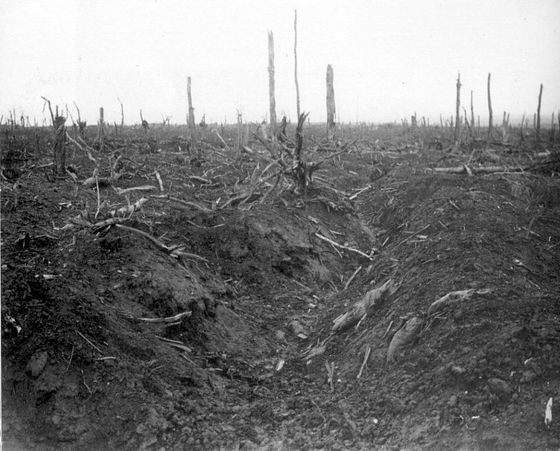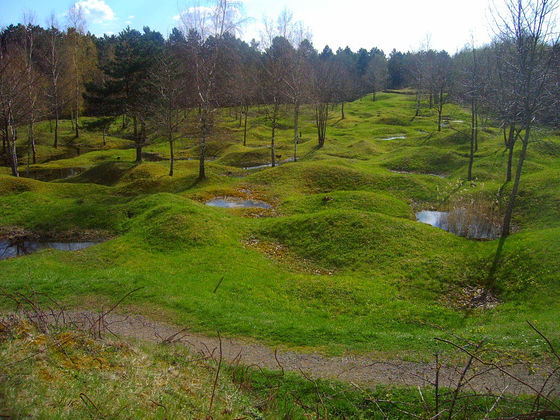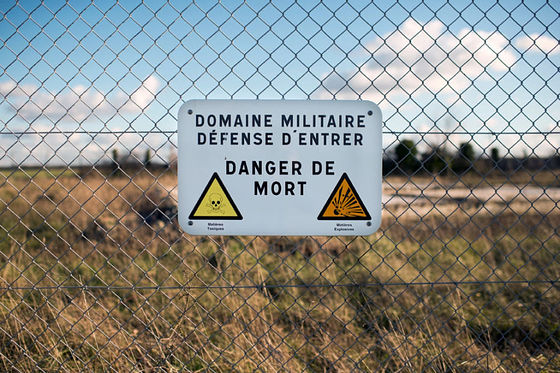'A place where humans cannot live' that remains even 100 years after the end of the war

The effects of a war of destruction and scramble for life can continue to pollute and affect land even after the war itself is over. The battlefield where the French and German troops fought fiercely in World War I still has its negative legacy, and even after 100 years, people and animals still remain. It is abandoned as an unsuitable place to live.
After 100 years, World War I battlefields are poisoned and uninhabitable --We Are The Mighty
Red Zone-National Geographic Society
http://nationalgeographic.org/news/red-zone/
Among the World War I battles between 1914 and 1918, the Battle of Verdun in February 1916 and the Battle of the Somme in June of the same year, which broke out between the French and German troops, were particularly fierce battles. was. The Battle of Verdun killed 700,000 soldiers in total, and the Battle of the Somme killed more than one million soldiers, making it one of the greatest battles in World War I.
A scene of the battlefield taken when the Battle of the Somme was unfolded. You can't feel the existence of living things in the rough land as far as you can see, and the scenery reminiscent of the world of death is spreading.

The location is different, but the current state of the land where the scars of the battle remain. This is the battle area of the Battle of Verdun, which was shot in 2016, and although it is overgrown with trees and greenery, the state of the ground where the remains of the cannonballs seem to convey the state of the terrible bombardment at that time.

These battlefield sites were classified by the French government after the war as ' Zone Rouge ' (meaning 'Red Zone' in English), and the access of ordinary people and their use as agricultural land were severely restricted. I did. The lead used in the ammunition used during the attack and the toxic gas contained in the ammunition still remain in large quantities, and the remains of the victims and the unexploded ordnance have hardly been recovered or processed. Therefore, it is a land isolated from the general public as an area that is too dangerous for people to live in.
As a result of this measure, nine villages that existed at that time disappeared. In the village, also known as 'villages that died for France,' the villagers were ordered to evacuate during the battle, after which the village was completely destroyed. And even after the war ended, the original area was not suitable for residence and it was impossible to recover it, so it was abandoned.

By
A plate posted on the fence of the controlled area stating 'Military controlled area at risk of death'.

Lead bullets left in the area. As these weather and permeate the land, soil and water are polluted, and lead that greatly exceeds the safe value has been detected in the bodies of wild animals living in the area.

In addition, unused grenades are left as unexploded ordnance, and even after 100 years, the risk of explosion is extremely high. In fact, unexploded ordnance has exploded in the relatively safe 'Yellow Zone' adjacent to the Red Zone, causing damage such as the destruction of agricultural tractors and the death of residents. It is said that it is still out.

Equally serious is the presence of shells filled with poisonous gas. Since there is a high risk of poisonous gas left in the shell, which is as tall as a person, leaks out, it is considered to be an area that is completely unsuitable for people to enter.

It is said that the remains of such shells are rolling around in the area.

A trench left as it was at that time. In 100 years, the surrounding area is covered with forest, but once there was an unimaginable battle here.

The area of the Red Zone covers 4.6 million square miles, which is almost the same size as the main island of Okinawa in Japan. It is said that it will take 300 to 900 years for a complete reconstruction because the area is so vast, and post-war processing is extremely difficult so that some experts say that reconstruction is impossible. It has been with.

At first glance, an ordinary forest spreads out, but the scars of war continue to pollute the earth, leaving an environment that is too dangerous for living things to live in. In this way, the mistakes of humankind during the war era have been passed down to future generations as a legacy of the previous generation.

YouTube is a video of 'Villages Dead for France' created by 'CRIC (Cultural Heritage and the Reconstruction of Identities after Conflict)', a British research organization that revives cultural heritage and identities lost in the war. It is published in. The state of the village destroyed during the battle and the efforts to preserve the memory of the village at that time are talked about.
'Places that Died For France': Commemoration and Memory on the Verdun battlefield --YouTube
Related Posts:







